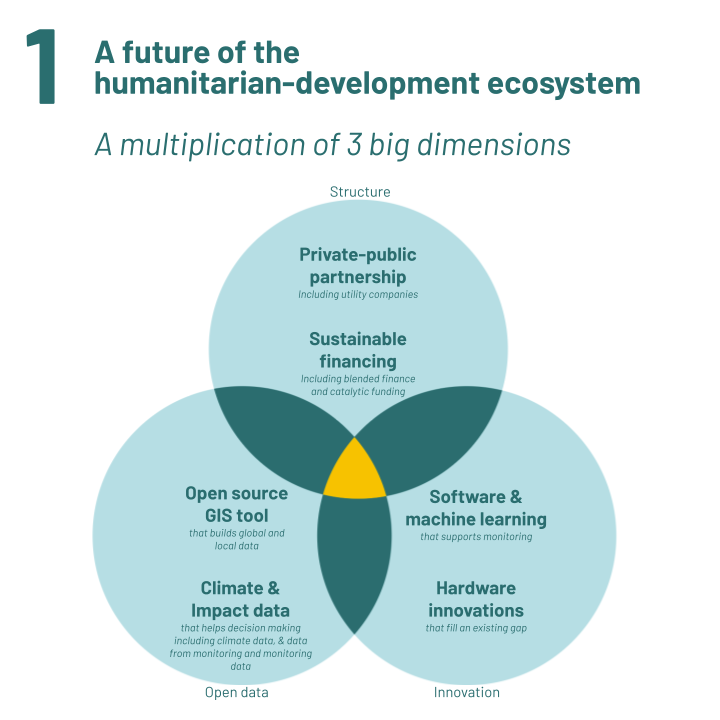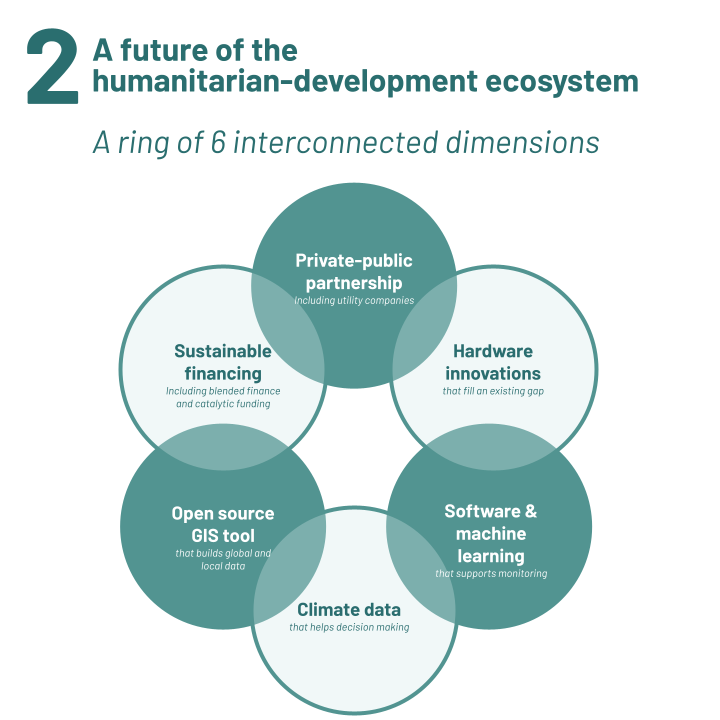Paradigm shift in the humanitarian-development space
Our insights from EEHF 2025
By now, our readers probably have a good idea that we LOVE mapping. YES WE DO! After participating in the Emergency Environmental Health Forum (EEHF) 2025 in Geneva, we did some mapping and are sharing the following insights. The following was first published as a series of 5 posts on our Linkedin page.
Here’s a snapshot of what we observed
across the 47 presentations:
13 presentations focused on innovations or innovative approaches:
6 related to water specifically
2 on sanitation specifically – including AKYAS
Sanitation-focused insights
20 presentations addressed sanitation in some form (often alongside water).
13 of those were specifically focused on sanitation or fecal sludge management. Among these:
2 explored novel technologies and deployment – including AKYAS
6 emphasized lived experience and people-centred approaches
4 focused on utilities and centralized infrastructure
Figure above: Matrix of 47 presentations in 17 key topics of 4 categories — where
Innovation is the core of AKYAS,
Sanitation/FSM & Water are AKYAS’ primary interests,
alongside 5 other WASH sector interests (such as menstrual hygiene, vector control and (mal)nutrition), and
thematic relevance such as utilities/infrastructure, financing, climate resilience, resource reuse etc.
Figure below: The 47 presentations + 1 keynote and the organisation the presenter represented. The presentation # in the figure above corresponds to the # below.
The full list of authors and presenters are available on EEHF’s website.
#0 Keynote
From keynote Innovative financing for humanitarian WASH by HIFHUB:
Blended finance does not seek to replace grants, but rather, to complement, encouraging other actors to step up. Certain contexts may suit specific types of financing; for example, grants are often more appropriate in rural areas.
As development actors and humanitarian actors shared many common interests, strategic humanitarian resources can be mobilised from within (and used to attract) the resources from much bigger development sector.
Humanitarian coordinators as enablers, by working with SME, could unlock investments into the field from non-conventional funders, including from development banks and commercial bankers.
Collective problems require collective actions!
Check out from HIFHUB’s website for their publications! https://en.rodekors.dk/hifhub/news
#21
From the presentation Utility water services for refugees and host communities by IRCWash, the think tank:
Transition from emergency response to long-term thinking in WASH service provision, through investment in water systems, significantly improves quality and quantity of water supply.
The long-term cost-benefit is clear: investments in water systems can reduce costs by 90% over 10 years. An initial 7-fold cost reduction was achieved when transitioning to permanent systems under NGO management, followed by a further 30% drop after the handover to utility management.
A utility-led service provision model for refugee and host communities has demonstrated operational efficiency and social impact. Its potential for long-term sustainability is promising, though sustained financing and subsidies still need to be addressed.
Further reading of the research by UNICEF, IRC and UNHCR:
#31 (by AKYAS!)
Remember last year at the Emergency Environmental Health Forum at @Eawag, Zurich? Since then we've made meaningful progress. And this year, we were excited to present at @ICRC, Geneva, at the EEHF again, with a group of engaging audiences from the international WASH community, including scholars, humanitarians, development actors and more! Happy to be one of the very few private sector representatives!
From our presentation Effluent Diversion Unit (EDU): Separation for Simplicity: Transforming latrine pits into mini-onsite treatment centres, here are some notes:
We gathered excellent field results demonstrating the versatility of our innovative systems, making use of our unique liquid-diversion device, EDU, across settings with varying climate-resilience needs.
Looking ahead, we shared our vision for the future of wastewater management with our innovations— not only in individual household settings, but across the urban–rural continuum, and even integrated into buildings and neighborhoods.
In light of ongoing discussions about financing amid global funding cuts to the humanitarian-development space, we offered our perspective as a private sector innovator on leveraging catalytic funding and blended finance to drive impact.
We're eager to connect with partners from around the world—academics, governments, and development agencies, private sectors and more —to explore how we can scale wastewater innovation together.
Concluding remarks:
6 themes for a collective
paradigm shift
From the 3-day event, with 47+1 presentations spanning dozens of topics, we are inspired to imagine a future for the humanitarian-development ecosystem - composed of 6 consequential themes that stems from our top picks of presentations:
Private-public ownership (e.g. with utility companies @IRCWash)
Sustainable financing (e.g. with blended finance @HIFHUB)
Open-source database (e.g. with open source GIS mapping tool @Solidarités International)
Climate & impact data (from Infrastructure, @ IHE)
Software & machine learning (e.g. assessment of water treatment @York University)
A targeted gap solved by hardware tech innovation (e.g. in Sanitation @AKYAS)
There is a lot of room for the sanitation/FSM sector to gain traction in the humanitarian-development innovation space (including the adoption of effective decentralised solutions) and result delivery collectively.
While we champion innovation, it’s essential to balance this with pragmatic approaches that deliver results, especially in emergency and humanitarian contexts where immediate impact is critical.
With that said, we believe there are overarching themes that guide all actors in the humanitarian-development space, to recognise the significance of the work under each theme, and yet should not overlook the interconnected of them.
The 6 themes above, are visualised in two different Venn diagrams below.
The first one represents 3 even broader concepts - structure, open data, innovations. The area where the 3 “worlds” overlap, is the moment with the most concerted effort and most impactful effect on the humanitarian-development sector's future.
The second one represents all 6 topics with equal importance, no hierarchy.
Conceptually, these two different models would offer a compass for management and leadership, in a world of changing global order. What are your thoughts around the two different models?
Feel free to drop a comment on our Linkedin Post!





